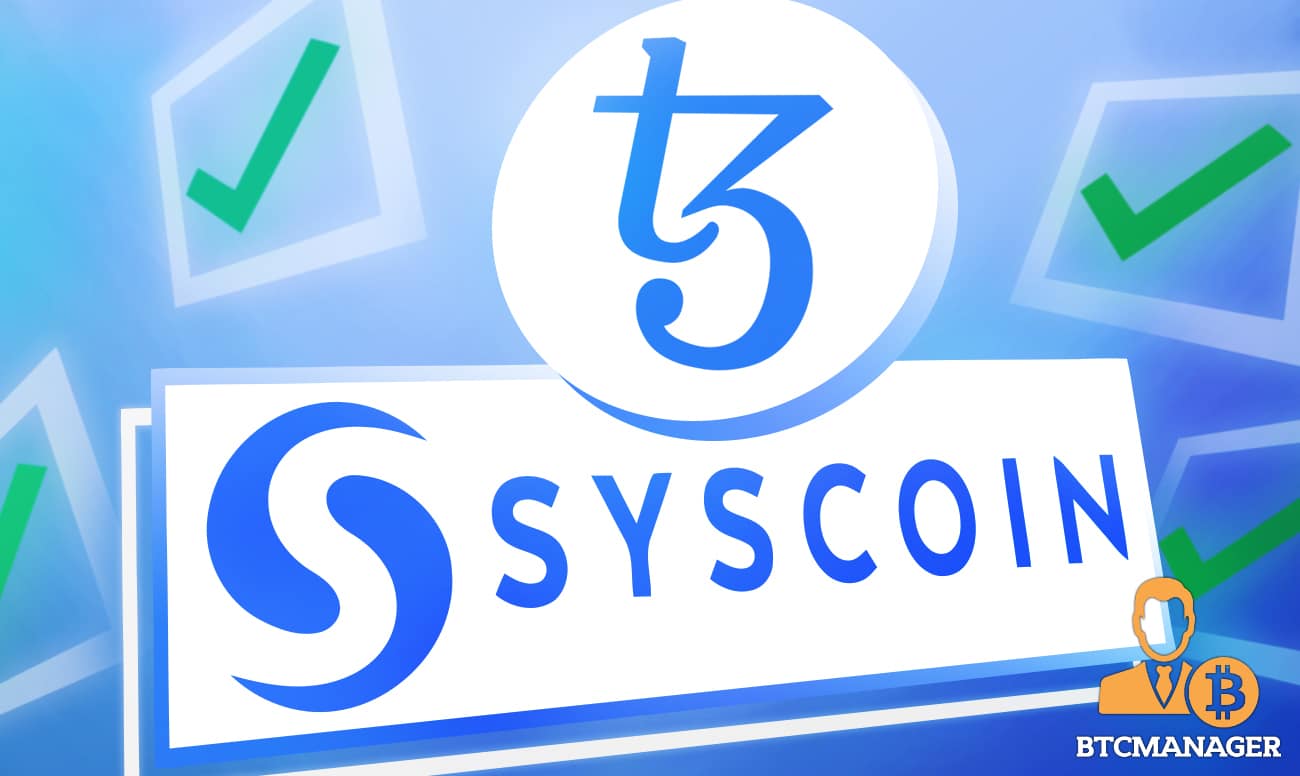How Syscoin And Tezos Tackle Regulatory Compliance And Efficiency

As competition in the blockchain space keeps heating up, it becomes essential to look beyond Bitcoin and Ethereum. Projects trying to combine the best of both worlds will often have a solid chance at becoming long-term successes. In addition, big brands are entering the industry, requiring higher efficiency and compliance-oriented efforts. Tezos and Syscoin are two ecosystems worth keeping an eye on in this regard.
Don’t Sleep On Syscoin and NEVM
Although it is one of the longest-running ecosystems in the blockchain space today, Syscoin has not gained the recognition it deserves. By taking the best parts of both Bitcoin and Ethereum, Syscoin positions itself as a solid contender to become a next-generation blockchain development hub. Additionally, the developers aim to introduce ZK-rollup support for faster transactions. The layer will put L2 blocks on top of Ethereum’s blockchain through a sidechain.
It is an alternative to Ethereum that uses a two-chain system. One chain is merge-mined with Bitcoin, allowing Syscoin to leverage Bitcoin’s network security. The other chain is the Network Enhanced Virtual Machine, or NEVM, which enables developers to execute any code that works on Ethereum. Of course, that also applies to smart contracts, decentralized finance, NFTs, decentralized exchanges, token issuance, and much more. A third party is currently auditing the NEVM code.
However, there is more that makes Syscoin unique. Projects building on this technology stack can opt-in to regulatory compliance at scale for transactions involving their assets. More importantly, this is achieved without involving third parties or other custodians. The developers enable this opt-in approach on the UTXO side, which may also occur on Rollups later.
The benefit of opt-in compliance at scale is a game-changer in the crypto and blockchain industry. It paves the way for securities and real-world assets to benefit from emerging trends in the cryptocurrency industry. Bringing securities to DeFi, decentralized exchanges, or even supported as collateral for NFTs are just some of the potential options. Moreover, that can all be done safely and efficiently, bringing a positive spotlight to Syscoin and its ecosystem.
What Makes Tezos Stand Out?
Tezos is often compared to Ethereum as both ecosystems explore very similar opportunities. The main difference between the two is how Tezos is more energy-efficient due to a different consensus mechanism. Additionally, it can evolve quicker than Ethereum, even if that latter network receives its much-anticipated ETH 2.0 upgrade. As a decentralized network for DApp development and smart contracts, Tezos has built on a solid reputation.
It was also one of the most extensive initial coin offerings (ICOs) in history, raising over $232 million, far more than Ethereum itself. Tezos’ on-chain governance makes it different from Ethereum, introducing the concept of a “self-amending chain.” Developers can propose changes, tested by network users, and then the network votes on it. The features are integrated through a “hot swap” rather than a fork if the amendment is accepted. A network fork can always lead to a chain split, such as the birth of Ethereum and Ethereum Classic.
Syscoin And Tezos Are Built Different
Even though both Syscoin and Tezos can be seen as emerging blockchains bringing forth the best elements of Bitcoin, Ethereum, or both, they also differ in various aspects. Syscoin has a solid competitive advantage in retaining the security of Bitcoin’s network through merge-mining. Tezos, through its Emmy+ and Liquid proof of Stake approach, is secure, too, although the reliance on bakers can create centralization. For example, bakers can delegate their voting rights to other bakers, creating a risk of collusion and centralization.
A second advantage is an opt-in approach to features providing regulatory compliance. It is a significant first-mover advantage, although other blockchains may adopt a similar approach in the future. For example, Tezos has a partnership with Coinfirm for a blockchain AML & transaction monitoring solution. Although this procedure is forced upon users and developers and requires a third party, it is a step in the right direction. Syscoin provides an opt-in approach without custodians or third parties, making it a decentralized approach to compliance on demand.
Closing Thoughts
Both Tezos and Syscoin have merit in their approach to efficiency, speed, compliance, and more. Whether a forced AML solution works better than an opt-in regulatory compliance solution will depend on personal preference.
One must commend both ecosystems for exploring these new options and attempting to introduce more ‘legitimacy” to the crypto and blockchain industry.














